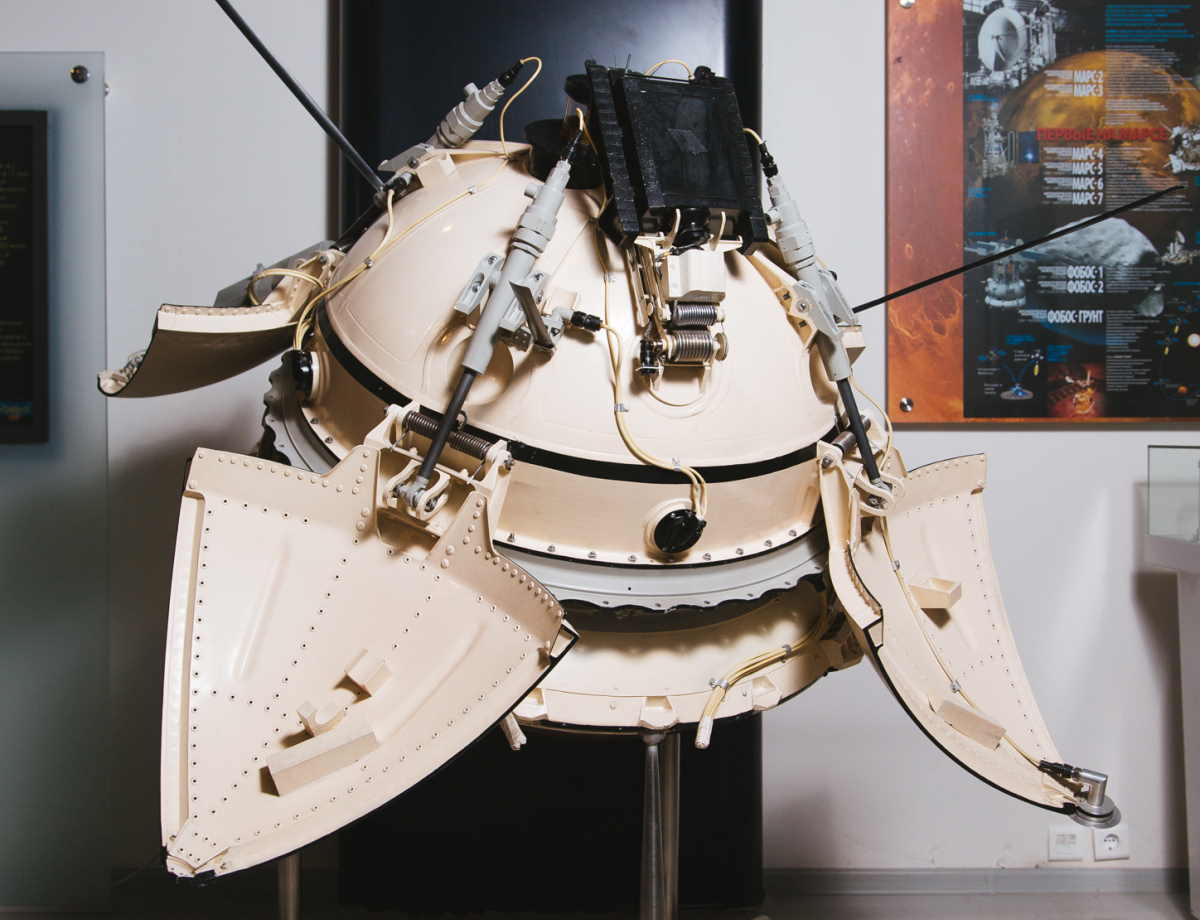On December 2, 1971, Soviet Union’s Mars 3 robotic space probe performed the first soft Mars landing. But, just 110 seconds after the landing, and 20 seconds after the transmissions has begun, it failed and transmitted just a gray image with no details. Although having no scientific value, this was the first transmission ever from the surface of Mars.
December 2 story of what happened this day in Science, Technology, Astronomy, and Space Exploration history.
Mars 3 and the first soft Mars landing
Mars 3 was launched on May 28, 1971, 9 days after its twin spacecraft, Mars 2. After almost 7 months, it performed the first soft Mars landing in the history of space exploration.
The primary scientific objective of the Mars 3 descent module was:
- Performing the first soft landing on Mars
- Returning images from the Martian surface
- Returning data on meteorological conditions, atmospheric composition, and mechanical and chemical properties of the Mars soil.

Mars 3 lander was equipped with:
- Two television cameras with a 360-degree view capability
- A mass spectrometer to study atmospheric composition
- Temperature, pressure, and wind sensors
- Devices to measure mechanical and chemical properties of the Mars surface, including a mechanical scoop to search for organic materials and signs of life.
The descent module was separated from the orbiter on December 2, 1971, and with a help of a braking parachute, it performed the first soft Mars landing.
At an altitude of 20 to 30 meters (65-100 feet) at a velocity of 60 – 110 meters per second, the main parachute was disconnected and a small rocket propelled the lander off to the side while the lander retrorockets were simultaneously fired.
The entire atmospheric entry sequence took a little over 3 minutes.
Mars 3 impacted the Martian surface at a reported speed of 20.7 meters per second (74.5 km/h or 46 mph).
The lander started transmitting 90 seconds after landing. But, just 20 seconds later, for unknown reasons, transmission stopped and no further signals were received at Earth.
A partial panoramic image of the Mars surface returned showed no detail (just a gray background) and a very low illumination of 50 lux.
The cause of the failure may have been related to the extremely powerful martian dust storm taking place at the time which may have induced a coronal discharge, damaging the communications system. The dust storm would also explain the poor image lighting.
Possible images of the Mars 3 lander on Mars
On April 11, 2013, NASA announced that the Mars Reconnaissance Orbiter (MRO) may have imaged the Mars 3 lander hardware on the surface of Mars.
The HiRISE camera on the MRO took images of what may be the parachute, retrorockets, heat shield, and lander.
This discovery was made by amateur space enthusiasts looking through publicly available archived images.

The set of images above shows what might be hardware from the Soviet Union’s 1971 Mars 3 lander, seen in a pair of images from the High-Resolution Imaging Science Experiment (HiRISE) camera on NASA’s Mars Reconnaissance Orbiter. These images were discovered by an Internet group of Russian space exploration enthusiasts who follow news about Mars and NASA’s Curiosity rover.
Sources
- Mars 3 on the NASA Space Science Data Coordinated Archive website
- Mars 3 on Wikipedia
- Moon Landings: All-Time List [1966-2025] - February 2, 2025
- What Is Max-Q and Why Is It Important During Rocket Launches? - January 16, 2025
- Top 10 Tallest Rockets Ever Launched [2025 Update] - January 16, 2025
